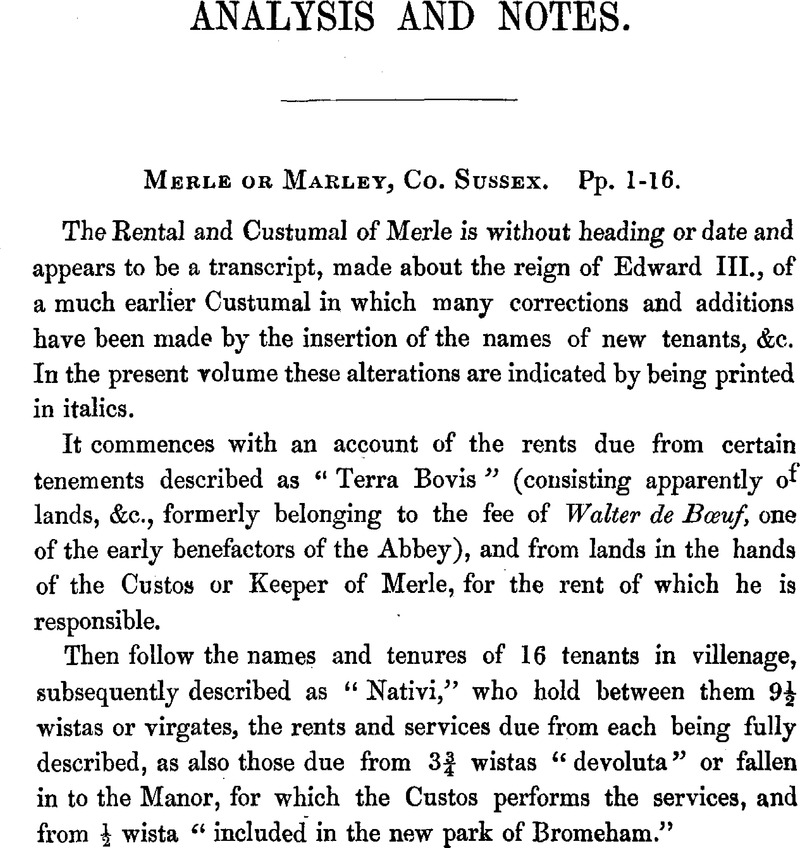No CrossRef data available.
Article contents
Analysis and Notes
Published online by Cambridge University Press: 24 December 2009
Abstract

- Type
- Other
- Information
- Camden New Series , Volume 41: Custumals of Battle Abbey, in the Reigns of Edward I. and Edward II. (1283–1312) , December 1887 , pp. xii - xlv
- Copyright
- Copyright © Royal Historical Society 1887
References
page xiv note * The value of this service appears to have been greatly over-estimated. In the Extents contained in the present volume the arable land is generally said to be worth only from 5 d. to 12 d. per acre. This may however represent the nett value, over and above the expense of cultivation.
page xiv note † It seems probable that the term “ Gavelmerke” indicates the division or boundary between the “ gafol-land,” or land let to the tenants and the lord's demesne.
page xv note * By an error in the original MS. this total is given as Hi acres, 3 roods.
page xvii note a The value of the meals is given in the original MS. as iij d., which, by comparison with subsequent entries, is clearly an error; the figures moreover are written over an erasure and appear to be a subsequent interpolation.
page xxiv note a By the Assize of Weights and Measures (Stat. of the Realm, vol. i. p. 204) it was ordained that an English penny sterling should weigh 32 grains of wheat, “dry in the midst of the ear”; that 20 pence should make 1 oz., and 12 oz. or 20 sterling shillings one pound—that is to say, a pound of pence or of spices, confections, &c. A pound of all other things, however, amongst which max is specially mentioned, consisted of 25 shillings or 15 oz.
page xxxv note * This appears to mean that the acre so chosen was not to be manured nor enclosed as a sheepfold, nor measured on the demesne for some other special purpose. The words “ forsettere nee foretata ” hare baffled all attempts to get at their meaning ; it is possible, however, that they have been written in mistake for “ warectare nee waretata,” which would render the passage perfectly intelligible.
page xxxvi note a The words “ cuilibet Magistro” in the original MS. should evidently be “quolibet Magistro.”
page xli note * The use here of the word “ virgata ” for rood is very unusual and rather confusing, the passage standing thus: “Et Virgata Throstle (debet arare) unam virgatam et dimidiam.” There can, however, be no doubt as to the meaning.
page xlii note * The serjeant was to call once for the hens and eggs; but if they were not ready the tenants were to carry them to the manor within 12 days; if this was not done, they were fined 21 d. in lien thereof.




